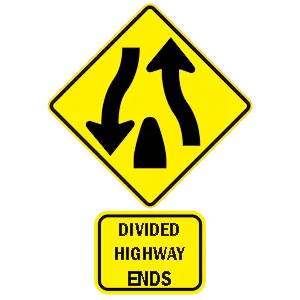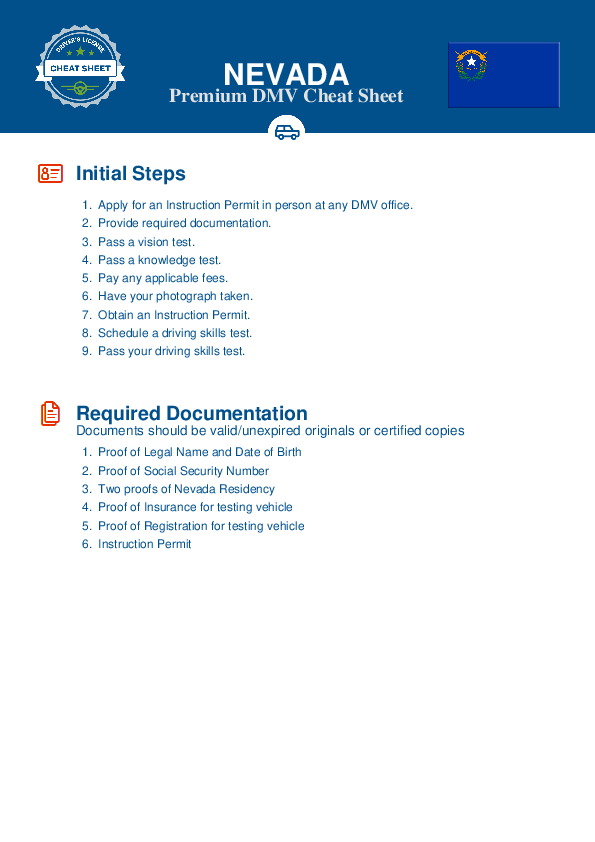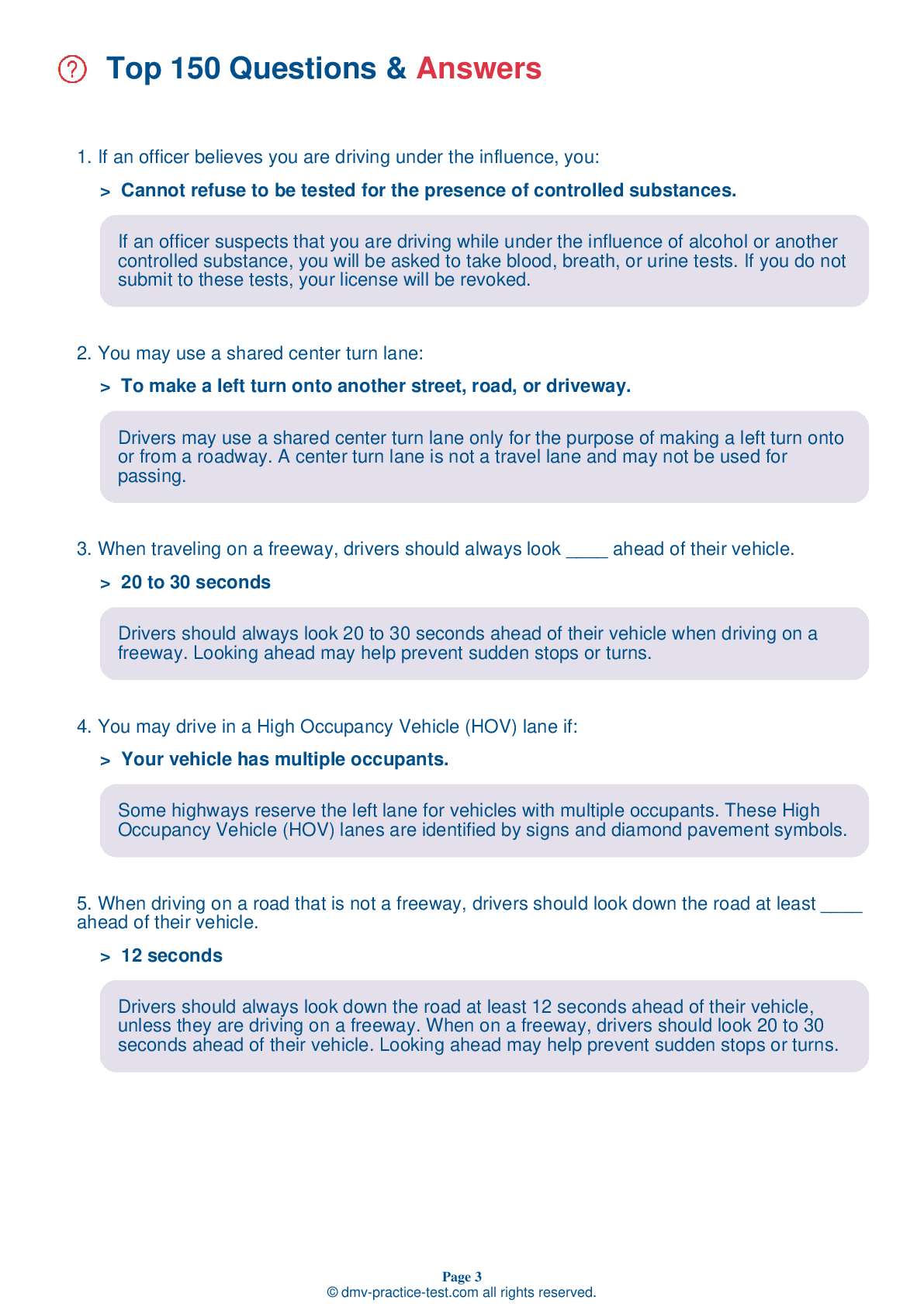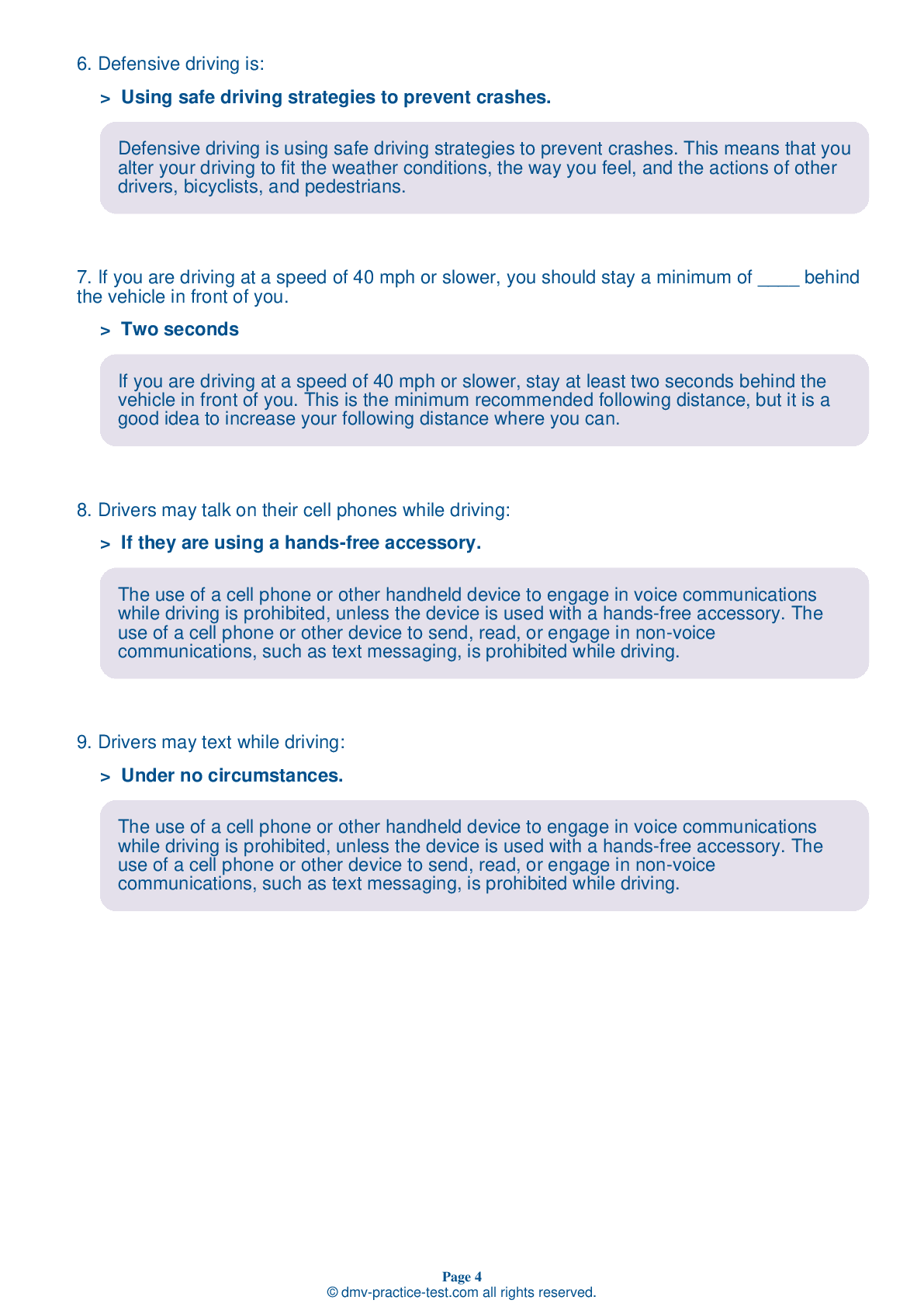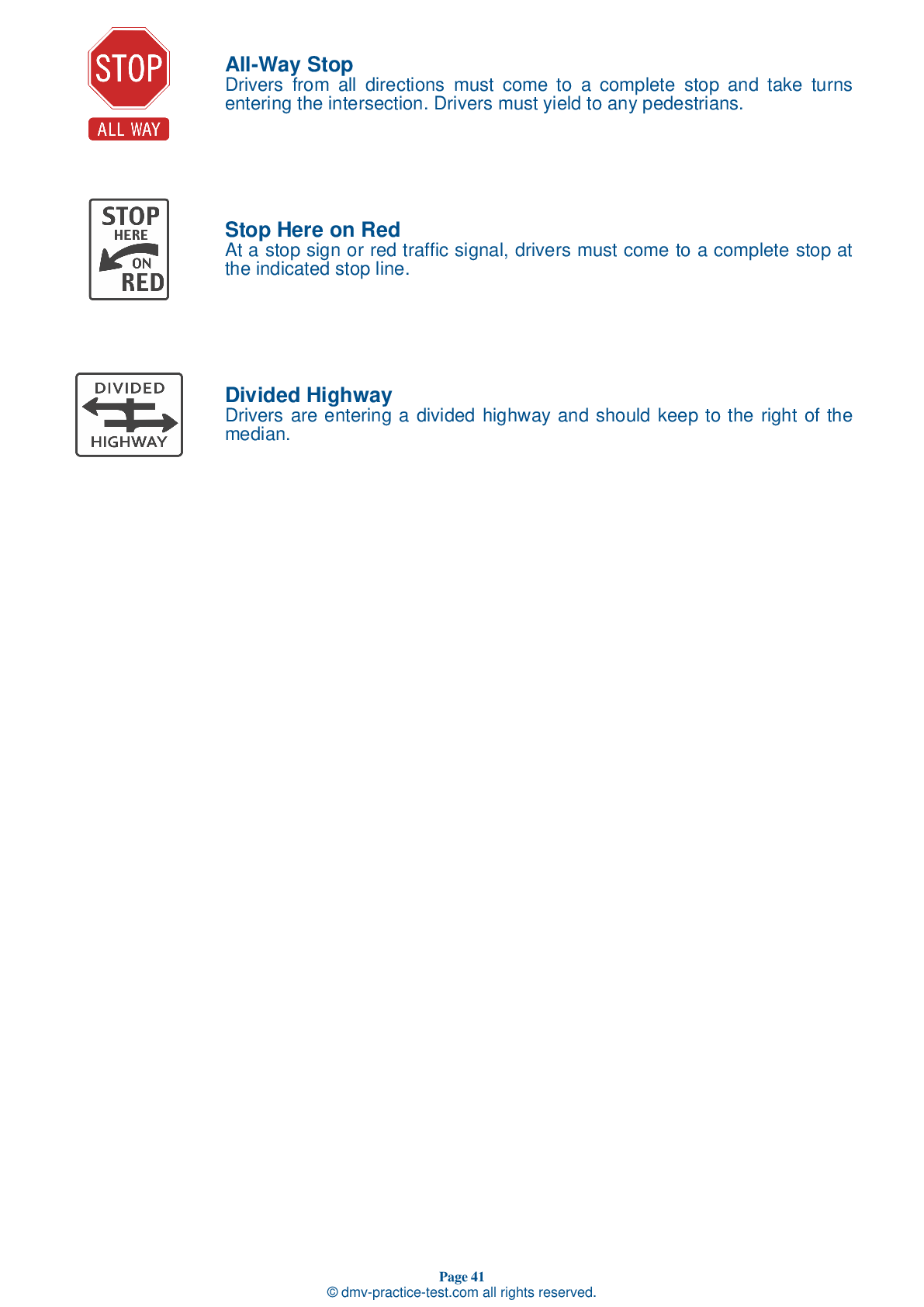FREE Nevada DMV Practice Test #11 Page 6 of 7
The Nevada DMV practise examinations have been updated for January 2025. It includes questions based on the Nevada Driver Handbook's most significant traffic signals and legislation for 2025. Use actual questions that are very similar (often identical!) to the DMV driving permit test and driver's licence exam to study for the DMV driving permit test and driver's licence exam.
On the practise exam, each question gets a tip and explanation to help you remember the concepts. The written component of the official Nevada DMV test will include questions about traffic rules, traffic signs, and driving statutes, as well as knowledge from the Driver Handbook.
To obtain a passing grade, you must correctly answer 40 of the 50 questions. To help you prepare for your instruction permit or driver's licence, take our Nevada DMV practise test.
The DMV exam is available in several languages.
Using any kind of testing assistance will result in an automatic fail, and the DMV may take additional action against your driver's licence, so stay away from it.
36 . When approaching a school bus stopped with its stop arm extended, drivers should:
When approaching a stopped school bus that is using its stop signal, a driver is required to come to a complete stop. They should not proceed until the stop arm is withdrawn.
37 . Fog can greatly reduce the visibility of other vehicles, pedestrians, and traffic signals. When driving in fog, you should:
Fog can greatly reduce your ability to see other vehicles, pedestrians, and traffic signals. When driving in fog, drive cautiously and at reduced speeds. Do not use high beam headlights. Low beams better illuminate the road and objects ahead in foggy conditions.
38 . An approaching driver fails to dim their high beam headlights. Where should you look?
If an approaching driver fails to dim their high beams, glance toward the right side of the road. This will keep you from being blinded by the other vehicle’s headlights and will allow you to see enough of the road to stay on course until the other vehicle has passed.
39 . You may honk your horn when you:
One situation where it is appropriate to use your horn is if you lose control of your vehicle. In this case, sound your horn to alert other drivers.
40 . You want to back out of your driveway. You see children playing nearby. Before you start to move your car, you should:
When you back up a vehicle, look through your back window for pedestrians and other obstacles. Do not rely only on your mirrors, especially when children are near. Before you back into or out of a driveway, get out of the vehicle and check behind your vehicle.
41 . After being pulled over by law enforcement, a driver should immediately exit the vehicle and quickly approach the officer’s squad car.
If stopped by law enforcement, you should stay in your vehicle with both hands clearly in sight on the steering wheel.
42 . This sign means:
